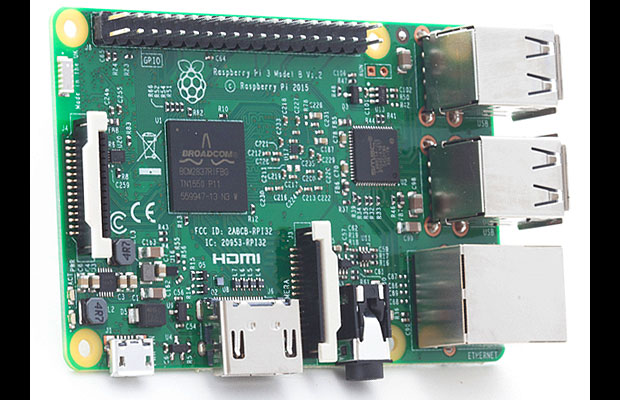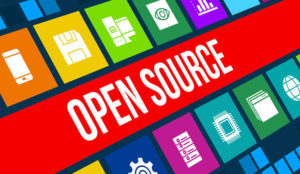TheRaspberry Pi Foundation on Monday announced the availability of the Raspberry Pi 3 Model B for US$35, the same price as the previous model.
It is thesecond major upgrade to the board in just over a year.
The hardware upgrade boosts the single-core processor of the original Pi to a faster, more capable quad-core chipset in the Pi 3. The current model is based on a 64-bit chipset that runs faster than the Pi 2’s 900-MHz quad-core, 32-bit ARM Cortex-A7-based hardware. The credit card-sized computer board adds WiFi and Bluetooth support.
The machine better handles Web browsing and office tasks home users need. It opens up even more possibilities for the Internet of Things and embedded projects, according to Eben Upton, CEO ofRaspberry Pi Trading. He launched the first Raspberry Pi version fours years ago.
“The new Raspberry Pi 3 Model B offers a higher level of performance than any other Raspberry Pi board on the market,” said Claire Doyle, global head of Raspberry Pi atelement14.
It “allows customers to develop specific applications and build new projects. We can’t wait to see what customers will do with it,” she told LinuxInsider.
Changing Usage Landscape
The upgrade to the Raspberry Pi hardware is a big deal for several reasons, said Jeremy Bray, owner ofCyberspace Fortress. The built-in support for WiFi and Bluetooth means users no longer have to buy third-party dongles to get those services.
“That means you are not taking up the Pi’s four USB ports to get that functionality, so you can now use those ports for other things. When it comes to business applications, I have seen businesses customize them for their own uses. … It is really just up to the business and their imagination for how it can be used in their business,” he told LinuxInsider.
The Raspberry Pi will be even more suitable for advanced computer training in classrooms, noted Craig Brown, president atPicoCluster, an educational platform based on Raspberry PIs.
“The bump from 900 MHz to 1.2 GHz allows for faster processing. This is particularly welcome for clustered application learning and certainly any application or learning environment that we’re running. This also makes it much better suited as a desktop replacement in classrooms and homes,” he told LinuxInsider.
The hardware could use more upgrades, such as options for 2 GB of RAM and Gigabit Ethernet, even if it came at a higher price point, but that may be beyond the scope of the manufacturing plan, Brown noted.
“Overall, this is a great way to upgrade our clusters while giving us a chance to reduce costs,” he said.
Business Beneficiaries
IT service businesses looking for lower costs in providing support and services to remotely monitor, manage and maintain their IT environments will benefit from the Raspberry Pi release, according to Ian Newman, CEO ofIN NYC IT. His company uses the small footprint of a Raspberry Pi in clients’ offices instead of a laptop or small desktop to monitor operations.
“We foresee placing the Pi in locations where clients report WiFi issues. We could use the Raspberry Pi 3 to collect data on the client’s wireless infrastructure and possible interference, all without interrupting users, increasing their productivity and our response and resolution times,” he told LinuxInsider.
The built-in WiFi/Bluetooth and improved 1.2-GHz, 64-bit CPU makes the Pi 3 easy for hobbyists to start developing projects on, noted Benny Estes, product manager atmyDevices. The same makers that are tinkering in their homes are also using the Pi to rapidly prototype solutions for applications for their businesses.
“This tool provides companies with the ability to quickly vet an idea or improve a process at a fraction of the time and cost, with little risk. As the Pi continues to improve, it will be used in production-ready solutions and will not be limited to just prototyping,” he told LinuxInsider.
Pi Specs
The Raspberry Pi 3 runs a Broadcom BCM2837 chipset on a 1.2-GHz quad-core 64-bit ARM Cortex-A53 CPU. It has an Ethernet connector for 10/100 with a maximum throughput of 100 Mbps and provides storage on a MicroSD card or via USB-attached storage.
Its graphics are from a 400-MHz VideoCore IV multimedia with full HDMI port, and the system memory is 1-GB LPDDR2-900 SDRAM. Audio support is a combined 3.5-mm audio out jack and composite video. The hardware includes a camera interface (CSI) and display interface (DSI).
The Pi board can play 1080p video at 60 frames per second. It sports a new power supply rated at 2.5A5.1V. Earlier boards used a power supply rated at 2A5V.
Unlike previous boards, the Pi 3 boots directly from a USB-attached hard or pen drive instead of from an SD card. Similarly, Pi 3 supports booting from a network-attached file system using PXE.
The latestRaspbian OS image is available for download.

















































